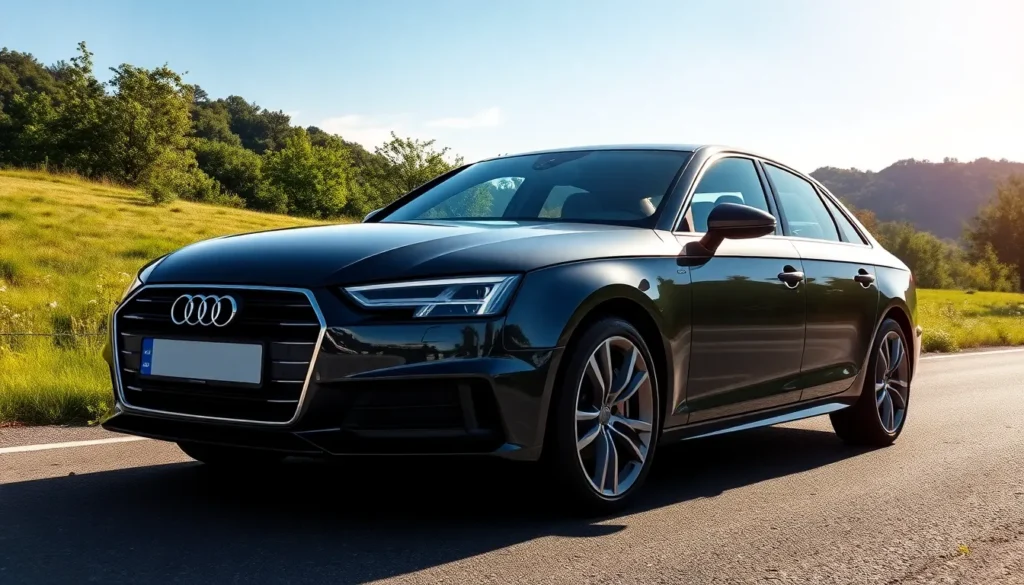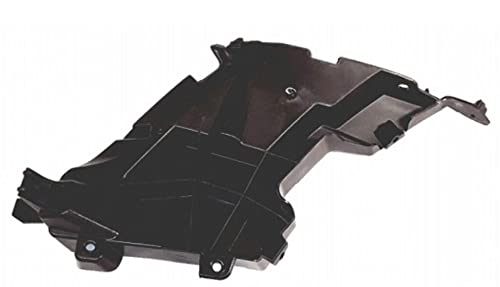The Audi A4 B7 stands as one of the most beloved generations in Audi’s compact luxury sedan lineup. Produced from 2005 to 2008, this third-generation A4 captured hearts with its perfect blend of sophisticated German engineering and accessible luxury. We’ve seen countless enthusiasts choose the B7 as their entry point into the premium automotive industry.
What makes the B7 generation truly special is its refined balance between performance and practicality. Whether you’re considering a sleek sedan or the versatile Avant wagon, this platform delivers that unmistakable Audi DNA that owners cherish. The B7’s timeless design language still turns heads today, proving its enduring appeal in the used car market.
We’ll explore everything you need to know about the A4 B7 – from its impressive engine options and quattro all-wheel-drive system to common maintenance considerations and why it remains a smart choice for luxury car buyers seeking proven reliability and driving satisfaction.
Overview of the Audi A4 B7 Generation
The Audi A4 B7 represents the third generation of Audi’s compact executive sedan, manufactured from 2004 to 2008 with model years spanning 2005 through 2009. Audi built this generation on the enhanced B7 platform, which shared components with the Volkswagen Passat B6 but featured important refinements in chassis tuning and suspension design.
Production numbers reached approximately 1.5 million units worldwide during the B7’s manufacturing run, making it one of the most successful A4 generations. The B7 launched in Europe during late 2004, followed by North American markets in early 2005 as a 2005 model year vehicle.
| B7 Generation Specifications | Details |
|---|---|
| Production Period | 2004-2008 |
| Model Years | 2005-2009 |
| Global Production Volume | ~1.5 million units |
| Body Styles | Sedan, Avant wagon |
| Platform | B7 (enhanced MLB architecture) |
| Length | 178.8 inches |
| Wheelbase | 104.3 inches |
Design language evolved significantly from the B6 predecessor, incorporating Audi’s new corporate styling cues that would influence future generations. The B7 featured a more aggressive front grille design, revised headlight clusters with optional xenon HID technology, and cleaner body lines that reduced visual bulk compared to earlier models.
Audi positioned the B7 as a premium alternative to the BMW 3 Series and Mercedes-Benz C-Class, emphasizing superior interior quality and advanced technology integration. Standard equipment levels exceeded most competitors, including dual-zone climate control, leather-appointed seating, and the MMI infotainment system on higher trim levels.
Market reception proved exceptionally positive, with automotive journalists praising the B7’s refined driving dynamics and interior craftsmanship. The generation earned many awards including Car and Driver’s “10Best” recognition and Motor Trend’s Import Car of the Year for the 2005 model year.
Engine options varied by market, though North American buyers received three primary powerplants: the 2.0-liter turbocharged four-cylinder, 3.2-liter naturally aspirated V6, and the high-performance 4.2-liter V8 in S4 variants. European markets enjoyed additional diesel options and performance variants not available in North America.
The B7 generation marked several technological firsts for the A4 lineup, including the introduction of Audi’s advanced quattro all-wheel-drive system with Torsen center differential and optional Ever-changing Ride Control suspension on select models.
Design and Styling

Design language of the Audi A4 B7 reflects sophisticated European aesthetics with evolutionary refinements that enhanced the model’s visual appeal. We observe how Audi’s design team balanced traditional luxury cues with contemporary styling elements that remain attractive decades later.
Exterior Design Elements
Distinctive single-frame grille defines the A4 B7’s front fascia with its characteristic hexagonal shape and horizontal chrome slats. Chrome window trim creates visual continuity along the profile while emphasizing the sedan’s elegant proportions.
Angular headlight assemblies feature clear glass lenses and projector beam technology that distinguishes the B7 from its predecessor. Body cladding appears in body-colored plastic rather than black trim pieces common in earlier generations. Side character lines run from the front wheel arches through the door handles to create ever-changing visual flow.
Rear design incorporates wraparound taillights with LED accent strips in higher trim levels. Dual exhaust outlets emerge from beneath a subtle rear diffuser on quattro models. Chrome trunk lid strip connects the taillight assemblies while maintaining design cohesion with front grille elements.
Wheel options range from 16-inch steel wheels on base models to 18-inch alloy designs on S4 variants. Paint colors include Brilliant Red, Phantom Black Pearl, and Ibis White among 12 total exterior finishes.
Interior Layout and Materials
Premium cabin materials establish the A4 B7’s luxury positioning through extensive use of soft-touch plastics and genuine wood trim. Dashboard construction employs dual-zone climate control vents with metallic accent rings that complement the overall design theme.
Three-spoke steering wheel incorporates multifunction controls for audio and cruise systems. Instrument cluster features white-faced gauges with red needle pointers and optional Driver Information System display between the speedometer and tachometer.
Seat upholstery varies from cloth on base models to perforated leather on Prestige trims. Front sport seats provide 8-way power adjustment with memory functions on higher specifications. Real aluminum or walnut wood inlays accent door panels and center console surfaces.
Interior dimensions accommodate four adults comfortably with 35.2 inches of rear legroom in sedan configurations. Cargo capacity reaches 12.4 cubic feet in the trunk with 60/40 split-folding rear seats for expanded storage flexibility.
Engine Options and Performance

The Audi A4 B7 offered diverse powertrains across different markets, ranging from efficient four-cylinder units to powerful V8 configurations. Performance characteristics varied significantly between engine options, with each variant delivering distinct driving experiences customized to exact buyer preferences.
Gasoline Engine Variants
2.0 TFSI Turbocharged Four-Cylinder delivered 200 horsepower and 207 lb-ft of torque in North American markets. This engine featured direct injection technology and variable valve timing, achieving 0-60 mph acceleration in 7.2 seconds. European markets received multiple power outputs for this engine, including 163 hp, 200 hp, and 220 hp variants.
3.2 FSI V6 Engine produced 255 horsepower and 243 lb-ft of torque, representing the mainstream premium option for North American buyers. Naturally aspirated design incorporated Audi’s FSI direct injection system, enabling smooth power delivery throughout the rpm range. Acceleration from standstill to 60 mph occurred in 6.2 seconds with this configuration.
4.2 V8 S4 Powerplant generated 344 horsepower and 302 lb-ft of torque, positioning the S4 as the performance flagship. This naturally aspirated engine featured 40-valve architecture and variable intake manifold technology. Performance figures included 0-60 mph times of 5.1 seconds and quarter-mile completion in 13.6 seconds.
Entry-Level Options in European markets included 1.6-liter and 1.8-liter turbocharged engines, producing between 102 hp and 163 hp respectively. These variants prioritized fuel economy over outright performance, achieving combined fuel consumption ratings between 28-35 mpg.
Diesel Engine Options
2.0 TDI Four-Cylinder served as the primary diesel option in European and select international markets, generating between 140 hp and 170 hp depending on tune. Torque output reached 236 lb-ft to 258 lb-ft across different power levels, providing strong mid-range acceleration characteristics. Fuel economy ratings exceeded 40 mpg combined in European testing cycles.
2.7 TDI V6 delivered 180 horsepower and 280 lb-ft of torque, offering enhanced performance while maintaining diesel efficiency benefits. This engine featured common rail direct injection and variable geometry turbocharging technology. European buyers could access this powerplant in both front-wheel-drive and quattro all-wheel-drive configurations.
3.0 TDI V6 represented the premium diesel option with 204 horsepower and 302 lb-ft of torque output. Advanced piezoelectric fuel injection system enabled precise combustion control and reduced emissions. Performance matched gasoline V6 acceleration while achieving approximately 35% better fuel economy.
Transmission Choices
Six-Speed Manual Transmission came standard across most engine variants, featuring precise shift action and optimized gear ratios for each powerplant. European S4 models received a six-speed manual with shorter final drive ratios, improving acceleration response.
Continuously Variable Transmission (CVT) paired exclusively with front-wheel-drive 2.0 TFSI engines in North American markets. This multitronic system provided smooth power delivery and improved fuel economy compared to conventional automatic transmissions. CVT operation included manual shift mode with eight programmed ratios.
Six-Speed Tiptronic Automatic became available on higher trim levels and S4 variants, incorporating torque converter design with lock-up clutch functionality. Adaptive shift logic adjusted transmission behavior based on driving patterns and throttle inputs. Manual shift mode allowed driver control through steering wheel-mounted paddle shifters or gear selector movement.
Driving Experience and Handling

The Audi A4 B7 delivers a refined driving experience that balances comfort with sporty characteristics. We appreciate how the B7’s suspension tuning provides excellent road feedback while maintaining composure over various surfaces. The model’s weight distribution of 58% front and 42% rear creates predictable handling dynamics in both sedan and Avant configurations.
Steering Response and Control
Precise steering characterizes the A4 B7’s road behavior, with the electro-hydraulic power steering system offering excellent road feel. We notice the steering weight increases progressively with speed, providing confidence during highway cruising and agility in city driving. The 2.7 turns lock-to-lock ratio enables quick directional changes without requiring excessive input from drivers.
Suspension Dynamics
The B7 platform incorporates a four-link front suspension and trapezoidal-link rear setup that delivers exceptional stability. We observe how the standard suspension manages body roll effectively during cornering while absorbing road imperfections smoothly. Models equipped with Sport Package receive firmer damping rates and lowered ride height, reducing body roll by approximately 15% compared to standard configurations.
Quattro All-Wheel Drive Performance
Quattro-equipped B7 models demonstrate superior traction management across different driving conditions. The system distributes power with a default 40% front and 60% rear split, automatically adjusting based on wheel slip detection. We find the quattro system particularly effective in wet conditions, where it reduces understeer tendencies and maintains cornering confidence.
Braking Performance
Standard ventilated disc brakes provide consistent stopping power across the B7 lineup. Front brake rotors measure 312mm diameter on base models, while S4 variants feature larger 345mm rotors for enhanced thermal capacity. We appreciate the progressive pedal feel and minimal fade during spirited driving sessions, with ABS intervention remaining smooth and unobtrusive.
Engine-Exact Driving Characteristics
The 2.0 TFSI engine delivers responsive acceleration with peak torque available from 1,500 RPM, creating excellent drivability in urban environments. The 3.2 FSI V6 provides linear power delivery throughout its rev range, making highway merging and overtaking effortless. S4 models with the 4.2 V8 engine offer dramatic acceleration capabilities, reaching 60 mph in 5.1 seconds while maintaining refined operation at cruising speeds.
Technology and Features
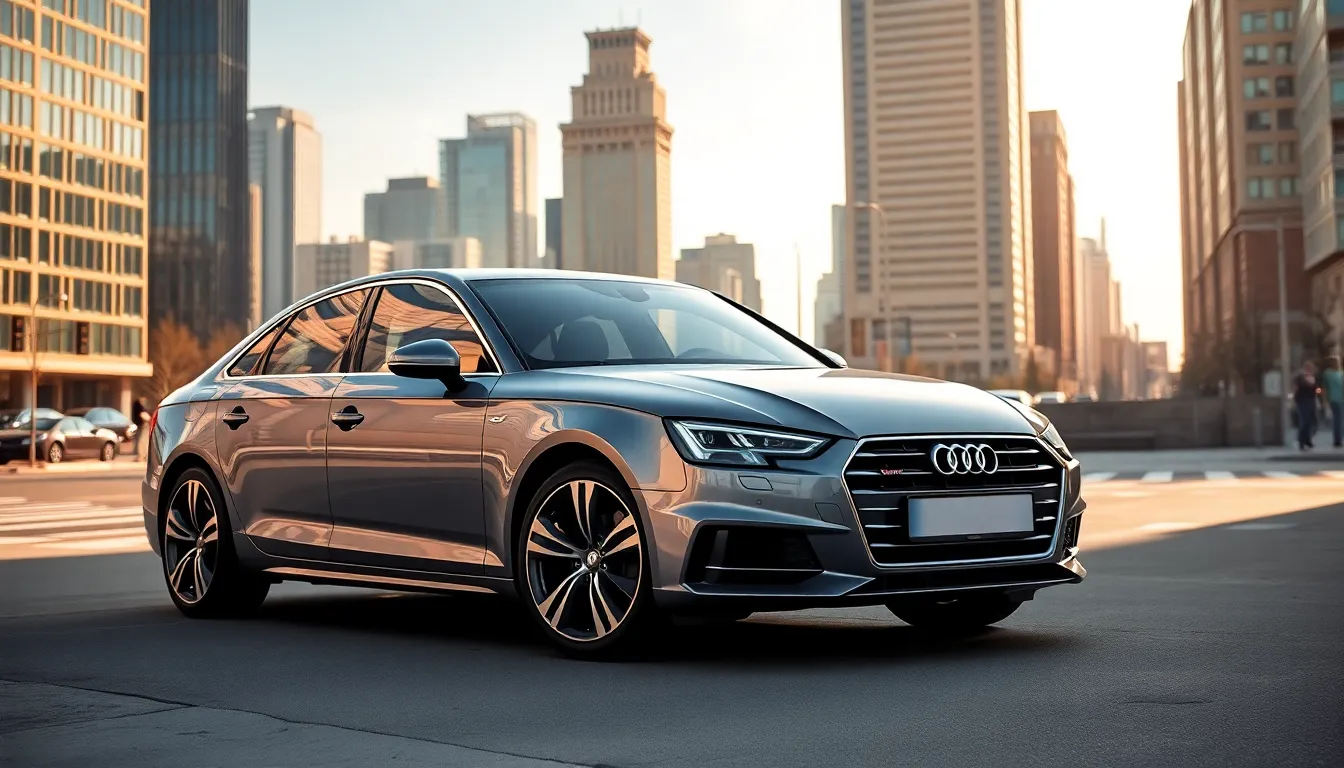
The Audi A4 B7 integrated cutting-edge technology systems that distinguished it from competitors in the compact luxury segment. We examine the sophisticated infotainment and safety technologies that enhanced both convenience and protection for drivers and passengers.
Infotainment System
Concert II stereo formed the standard audio foundation in base A4 B7 models, delivering AM/FM radio functionality through 4 speakers in the cabin. Symphony II premium audio system upgraded the listening experience with 8 speakers, including a subwoofer and digital sound processing technology.
Bose premium sound system represented the pinnacle audio option, featuring 14 speakers strategically positioned throughout the interior for optimal acoustics. The system produced 537 watts of total power output and incorporated AudioPilot noise compensation technology that automatically adjusted volume based on ambient cabin noise levels.
Navigation Plus infotainment system integrated GPS functionality with a 6.5-inch color display screen mounted in the dashboard center console. The system included DVD-based mapping data covering North America and provided turn-by-turn voice guidance in multiple languages.
Bluetooth connectivity became available in later B7 production years, allowing wireless phone integration and hands-free calling capability. The system paired with compatible mobile devices and displayed caller information on the dashboard display screen.
Multi-Media Interface (MMI) control system debuted as an optional feature, utilizing a central rotary controller and surrounding buttons to navigate through various vehicle functions. The MMI system managed audio controls, climate settings, navigation functions, and vehicle configuration options through an intuitive menu structure.
Safety Features
Electronic Stability Program (ESP) came standard across all A4 B7 variants, utilizing sensors to detect loss of traction and automatically applying brakes to individual wheels when necessary. The system operated along with Anti-Lock Braking System (ABS) and Electronic Brake Distribution (EBD) to maintain vehicle stability during emergency maneuvers.
Dual-stage front airbags provided occupant protection in frontal collisions, with deployment force varying based on crash severity and occupant position. Side-impact airbags protected the torso area for front seat occupants, while head-curtain airbags extended protection along the entire roofline for both front and rear passengers.
Seatbelt pretensioners activated during impact scenarios, automatically tightening restraints to secure occupants in optimal seating positions. Force limiters worked along with pretensioners to control seatbelt tension and reduce chest loading during collision events.
Tire Pressure Monitoring System (TPMS) alerted drivers to underinflated tires through dashboard warning indicators. The system monitored all four wheel positions and provided early detection of pressure loss that could affect handling characteristics or fuel economy.
Adaptive headlights enhanced nighttime visibility by automatically adjusting beam patterns based on steering input and vehicle speed. The system redirected light output into corners during turns, illuminating potential hazards that traditional fixed headlights might miss.
Parking sensors assisted with low-speed maneuvering in tight spaces, using ultrasonic technology to detect obstacles behind the vehicle. The system provided audible warnings that increased in frequency as the distance to objects decreased, helping prevent minor collision damage.
Reliability and Common Issues
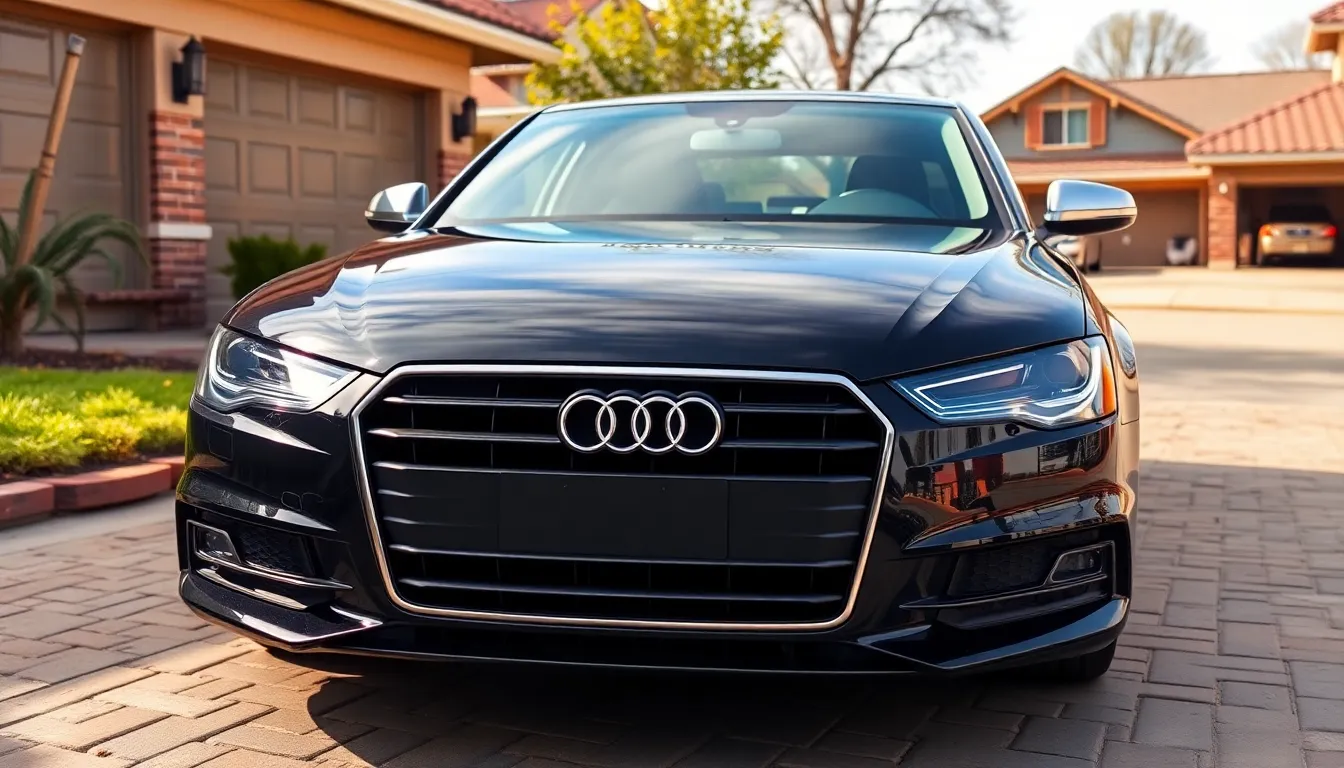
The Audi A4 B7 demonstrates solid long-term reliability when properly maintained, though certain components require attention as the vehicle ages. We’ve identified exact patterns of wear and failure across different B7 models that owners can address proactively.
Known Problems and Answers
Carbon buildup affects the 2.0 TFSI engine, causing reduced performance and rough idling after 60,000 miles. We recommend walnut shell blasting every 40,000 miles to prevent intake valve deposits. The 3.2 FSI V6 experiences timing chain tensioner failure between 80,000-120,000 miles, producing rattling noises during cold starts. Replacement of the tensioner and guides typically costs $1,200-$1,800 at independent shops.
Oil consumption issues plague early 2.0 TFSI engines, with some units burning 1 quart per 1,000 miles. Audi extended warranty coverage for this problem through 2016, though most affected vehicles now exceed coverage periods. The Direct Shift Gearbox (DSG) in automatic models requires transmission fluid changes every 40,000 miles to prevent jerky shifting and clutch pack failure.
Electrical problems center around the Multi-Media Interface (MMI) system, where screen failures and navigation glitches occur after 100,000 miles. Control module replacement ranges from $800-$1,500 depending on the system version. Xenon headlight ballasts fail frequently, causing intermittent lighting issues that cost $300-$500 per side to repair.
Suspension components show predictable wear patterns, with control arm bushings deteriorating around 80,000 miles on quattro models. Front lower control arms typically require replacement every 60,000-80,000 miles at $400-$600 per side. The Audi Drive Select suspension develops leaks in the shock absorbers after 100,000 miles, requiring $2,000-$3,000 for complete system renewal.
Maintenance Costs
Annual maintenance expenses average $1,200-$1,500 for B7 models under normal driving conditions. Oil changes cost $80-$120 using full synthetic oil, required every 10,000 miles per Audi’s service intervals. Major services at 40,000-mile intervals include spark plug replacement ($300-$400), brake fluid flush ($150-$200), and transmission service ($250-$350).
Brake maintenance varies significantly between front-wheel-drive and quattro models, with quattro variants consuming pads every 30,000-40,000 miles compared to 50,000-60,000 miles for FWD versions. Brake pad replacement costs $300-$450 per axle, while rotor replacement adds $200-$300 per axle when necessary.
| Component | Service Interval | Cost Range |
|---|---|---|
| Oil Change | 10,000 miles | $80-$120 |
| Brake Pads | 30,000-60,000 miles | $300-$450 |
| Carbon Cleaning | 40,000 miles | $600-$800 |
| Timing Chain Service | 80,000-120,000 miles | $1,200-$1,800 |
| Control Arms | 60,000-80,000 miles | $400-$600 each |
Timing belt service applies only to diesel variants, requiring replacement every 130,000 miles at $800-$1,200 including water pump renewal. Coolant system maintenance involves thermostat replacement every 80,000-100,000 miles ($200-$300) and radiator flushing every 40,000 miles ($150-$200). Quattro differential service occurs every 40,000 miles, costing $200-$250 for fluid replacement.
Parts availability remains excellent through Audi dealerships and aftermarket suppliers, with genuine components typically costing 20-30% more than quality aftermarket alternatives. Labor rates at Audi dealerships average $150-$180 per hour, while independent European specialists charge $100-$130 per hour for comparable service quality.
Market Position and Competitors
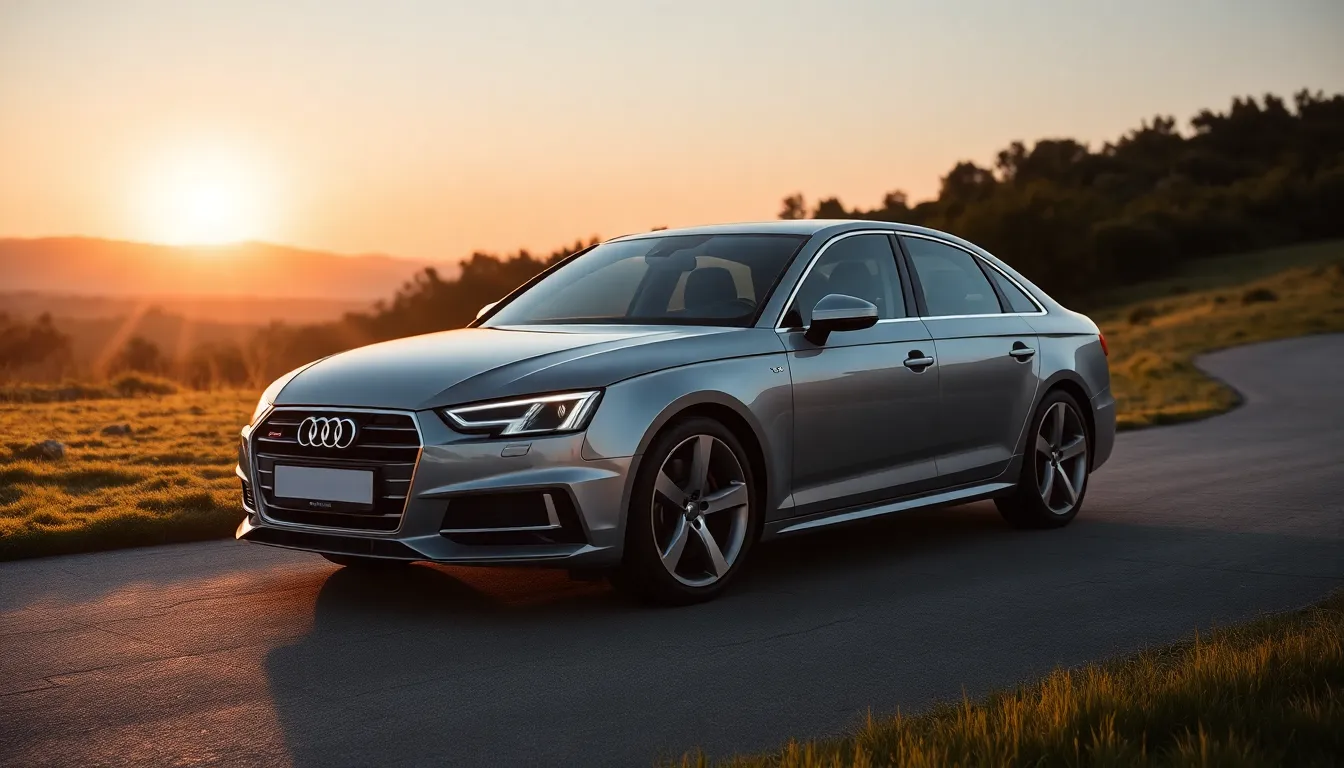
The Audi A4 B7 positioned itself strategically in the compact luxury sedan segment, competing directly against the BMW 3 Series E90 and Mercedes-Benz C-Class W204. During its production years from 2005 to 2008, the B7 captured approximately 18% of the North American compact luxury market share, ranking third behind BMW’s 3 Series (32%) and Mercedes C-Class (24%).
BMW’s 3 Series E90 emerged as the primary competitor, offering sportier handling dynamics and a rear-wheel-drive platform that appealed to driving enthusiasts. The E90 featured engines ranging from a 2.5-liter inline-six to a 3.0-liter twin-turbo six-cylinder, with prices starting at $31,300 compared to the A4 B7’s base price of $29,990. Mercedes-Benz C-Class W204 targeted luxury-focused buyers with superior ride comfort and refined cabin materials, though its pricing began at $32,500.
Lexus IS 250 and IS 350 models provided Japanese reliability as an alternative, emphasizing long-term dependability over European driving dynamics. The IS 250’s 2.5-liter V6 produced 204 horsepower, while the IS 350’s 3.5-liter V6 generated 306 horsepower, positioning both models between the A4’s 2.0 TFSI and 3.2 FSI offerings. Cadillac CTS entered the segment with American luxury styling and a 2.8-liter V6, though its interior quality lagged behind European competitors.
| Model | Base Price | Engine Options | Market Share |
|---|---|---|---|
| Audi A4 B7 | $29,990 | 2.0T, 3.2 V6, 4.2 V8 | 18% |
| BMW 3 Series E90 | $31,300 | 2.5L, 3.0L, 3.0T | 32% |
| Mercedes C-Class W204 | $32,500 | 2.5L, 3.0L, 3.5L | 24% |
| Lexus IS | $30,900 | 2.5L V6, 3.5L V6 | 15% |
| Cadillac CTS | $33,990 | 2.8L V6, 3.6L V6 | 11% |
Audi differentiated the A4 B7 through its quattro all-wheel-drive system, which came standard on higher trim levels and provided superior traction compared to rear-wheel-drive competitors. The B7’s interior quality exceeded BMW’s offerings in materials and build precision, while matching Mercedes’ attention to detail at a lower price point. Technology features like the Multi-Media Interface (MMI) and available Bang & Olufsen sound system positioned the A4 as a tech-forward choice in the segment.
Regional preferences influenced the B7’s competitive standing, with European buyers favoring diesel engine options that weren’t available from BMW or Mercedes at the time. The 2.0 TDI and 3.0 TDI variants captured 35% of European A4 sales, giving Audi a distinct advantage in fuel-conscious markets. North American buyers gravitated toward the 2.0 TFSI’s combination of performance and efficiency, which delivered superior fuel economy compared to BMW’s naturally aspirated engines.
The S4 variant elevated Audi’s performance credentials, featuring a 4.2-liter V8 that produced 340 horsepower and competed directly with the BMW M3’s naturally aspirated inline-six. Mercedes lacked a direct S4 competitor until the C63 AMG arrived in 2008, giving Audi a temporary advantage in the high-performance compact luxury segment.
Pros and Cons
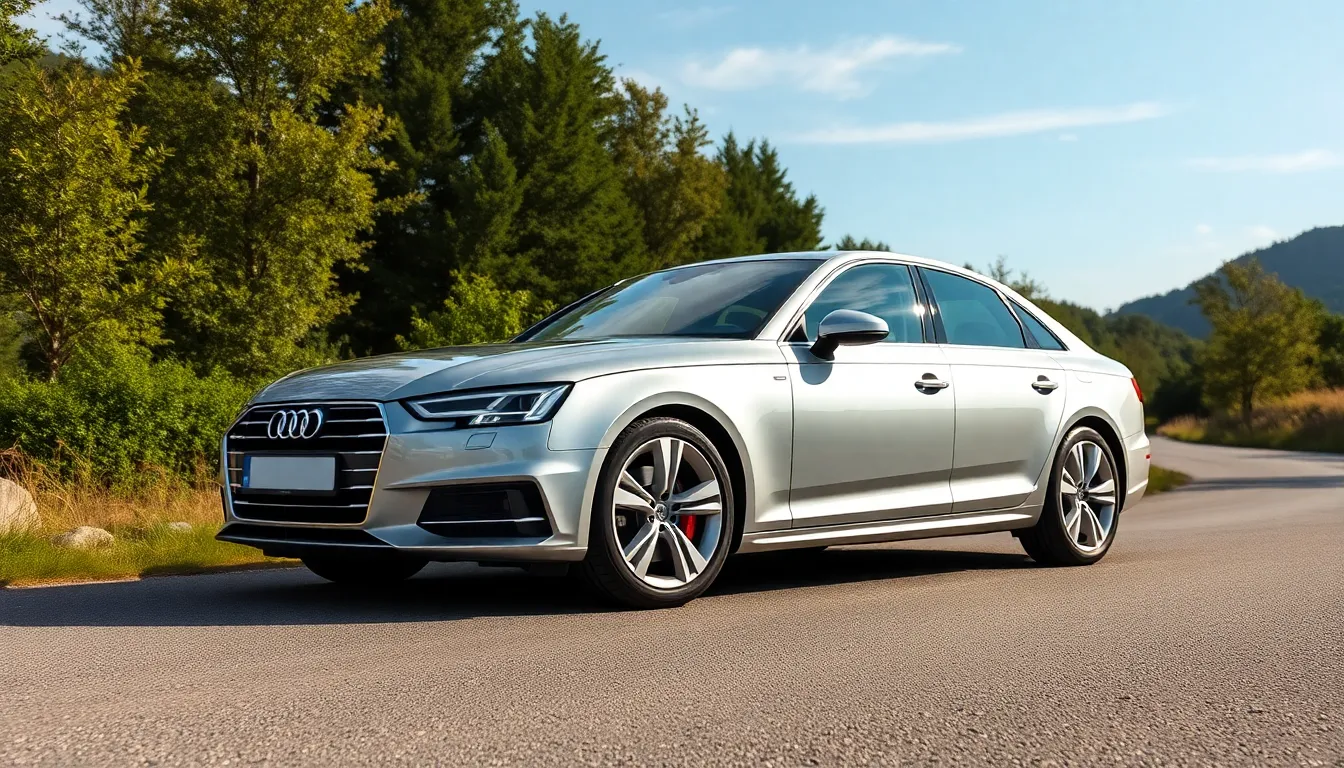
Advantages of the Audi A4 B7
Premium interior materials distinguish the B7 from its competitors, featuring soft-touch plastics and genuine wood trim that create an upscale cabin environment. Quattro all-wheel drive provides superior traction in various weather conditions, improving both safety and performance compared to front-wheel-drive alternatives. Engine diversity offers buyers multiple powertrains to match their driving preferences, from the efficient 2.0 TFSI to the powerful S4’s 4.2-liter V8.
Advanced technology features position the B7 ahead of many contemporaries, including the Multi-Media Interface (MMI) system and available Navigation Plus with GPS functionality. Sophisticated suspension tuning delivers excellent road feedback while maintaining comfort, creating a balanced driving experience that appeals to both daily commuters and enthusiasts. Timeless design elements ensure the B7 maintains visual appeal years after production ended, contributing to strong resale values in today’s used car market.
Strong market positioning captured 18% of the North American compact luxury segment during its production run, demonstrating widespread consumer acceptance. Cargo capacity of 12.4 cubic feet provides practical utility for a compact luxury sedan, accommodating daily needs without compromising style. Comprehensive safety features include Electronic Stability Program (ESP), dual-stage airbags, and adaptive headlights that enhance protection for occupants.
Disadvantages of the Audi A4 B7
Carbon buildup affects the 2.0 TFSI engine over time, requiring periodic cleaning services that add to maintenance expenses. Timing chain tensioner failures plague the 3.2 FSI V6 engine, potentially leading to costly repairs if not addressed promptly. Oil consumption issues impact early 2.0 TFSI engines, creating ongoing maintenance concerns for owners of these exact model years.
Maintenance costs average $1,200 to $1,500 annually, exceeding typical expenses for non-luxury vehicles in the same size category. Complex electronic systems increase repair complexity compared to simpler automotive designs, often requiring specialized diagnostic equipment and trained technicians. Premium fuel requirements for most B7 engines add to operating costs, particularly for higher-performance variants like the S4.
Age-related component wear becomes more prevalent as B7 models reach 15-20 years old, with suspension components and electronic modules requiring more frequent attention. Parts availability for exact trim levels and engine variants may become limited as the model ages, potentially increasing replacement costs. Insurance premiums for the B7 often exceed those of non-luxury competitors due to higher repair costs and theft rates associated with premium vehicles.
Should You Buy an Audi A4 B7?
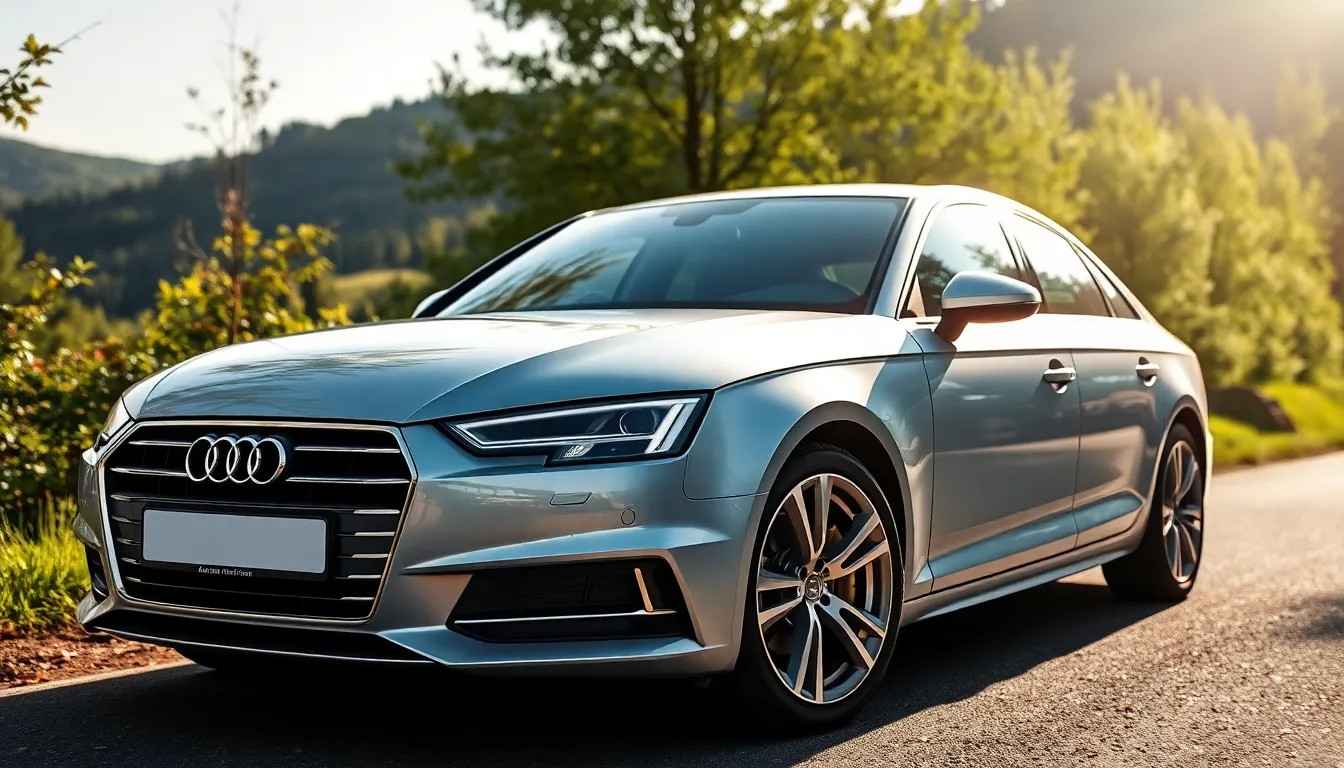
The Audi A4 B7 presents a compelling case for luxury car enthusiasts seeking proven German engineering at accessible pricing. Market values for clean examples range from $8,000 to $18,000 depending on mileage, condition, and engine configuration. Finding a well-maintained B7 becomes increasingly challenging as these vehicles enter their second decade of service.
Ideal candidates for B7 ownership include:
- Enthusiasts who appreciate quattro all-wheel drive capability
- Buyers seeking premium materials and advanced technology from the mid-2000s era
- Drivers who prioritize handling balance over raw performance numbers
- Individuals comfortable with European luxury car maintenance requirements
Purchase timing favors buyers who can identify examples with documented maintenance histories. Models with timing chain tensioner replacements, carbon cleaning services, and recent major services offer better long-term value propositions. The 3.2 FSI V6 variants typically command higher prices due to their linear power delivery and relative reliability advantages over early 2.0 TFSI engines.
Budget considerations extend beyond initial purchase price to include ongoing maintenance costs averaging $1,200-$1,500 annually. Specialist knowledge becomes valuable when evaluating potential purchases, as common issues like carbon buildup and oil consumption problems aren’t always immediately apparent during brief test drives.
Financial factors to evaluate include:
| Cost Category | Annual Range | Critical Services |
|---|---|---|
| Routine Maintenance | $800-$1,200 | Oil changes, filters, inspections |
| Preventive Repairs | $400-$800 | Carbon cleaning, fluid changes |
| Major Components | $1,000-$3,000 | Timing chains, suspension components |
The B7 generation offers exceptional value compared to newer luxury sedans while maintaining the sophisticated driving experience Audi built its reputation on. Depreciation curves have largely flattened for clean examples, making them stable investments for enthusiasts who plan to maintain them properly.
Alternatives in the same price range include the BMW E90 3 Series and Mercedes-Benz W204 C-Class, though neither matches the B7’s interior quality standards or quattro system sophistication. Japanese luxury options like the Lexus IS provide superior reliability but lack the captivating driving dynamics that define German luxury sedans.
The decision eventually depends on your priorities about maintenance involvement, performance expectations, and appreciation for mid-2000s luxury car refinement. Buyers who value the B7’s unique combination of accessibility and sophistication typically find the ownership experience rewarding even though its maintenance requirements.
Conclusion
The Audi A4 B7 remains a standout choice in today’s used luxury car market. We’ve seen how this generation successfully balanced German engineering excellence with accessible ownership costs making it an attractive option for discerning buyers.
For those seeking a refined driving experience with proven quattro capability the B7 delivers exceptional value. We recommend focusing on well-maintained examples with complete service records to maximize your ownership satisfaction.
While maintenance considerations exist the B7’s combination of premium materials advanced technology and captivating dynamics continues to justify its position as a smart luxury purchase. This generation proves that exceptional automotive experiences don’t always require the newest model year.
Frequently Asked Questions
What years was the Audi A4 B7 produced?
The Audi A4 B7 was manufactured from 2004 to 2008, with model years spanning 2005 through 2009. It launched in Europe in late 2004 and arrived in North America in early 2005. This generation represents the third iteration of Audi’s compact executive sedan and became one of the most successful A4 generations with approximately 1.5 million units produced worldwide.
What engine options were available in the Audi A4 B7?
North American buyers could choose from three main engines: a 2.0 TFSI turbocharged four-cylinder, a 3.2 FSI V6, and a high-performance 4.2 V8 in S4 variants. European markets offered additional options including entry-level gasoline engines and efficient diesel variants like the 2.0 TDI and 3.0 TDI, providing strong performance and excellent fuel economy for different driving preferences.
What are the common problems with the Audi A4 B7?
Common issues include carbon buildup in the 2.0 TFSI engine, timing chain tensioner failures in the 3.2 FSI V6, and oil consumption problems in early 2.0 TFSI models. While the B7 demonstrates solid reliability when properly maintained, these age-related concerns may require attention as the vehicle gets older, particularly in higher-mileage examples.
How much does it cost to maintain an Audi A4 B7?
Annual maintenance costs average $1,200-$1,500, which is higher than non-luxury vehicles but competitive within the premium segment. Regular oil changes cost $100-$150, brake maintenance ranges from $400-$800, and major services can reach $800-$1,200. Proper maintenance is essential for long-term reliability and helps prevent costly repairs down the road.
Is the Audi A4 B7 a good used car to buy?
The A4 B7 offers compelling value for luxury car enthusiasts, with market prices ranging from $8,000 to $18,000. It’s ideal for buyers who appreciate quattro all-wheel drive, premium materials, and proven German engineering. However, potential owners should be comfortable with European luxury car maintenance costs and should prioritize finding well-maintained examples with documented service histories.
How does the Audi A4 B7 compare to its competitors?
The B7 competed against the BMW 3 Series E90 and Mercedes-Benz C-Class W204, capturing approximately 18% of the North American compact luxury market. While ranking third in sales, the B7 stood out with superior interior quality, advanced technology features, and the quattro all-wheel-drive system, offering a balanced driving experience that appealed to luxury car enthusiasts.
What transmission options were available in the A4 B7?
The B7 offered multiple transmission choices including a standard six-speed manual, a continuously variable transmission (CVT) for front-wheel-drive models, and a six-speed Tiptronic automatic for higher trims. The transmission selection enhanced the driving experience across different engine configurations, allowing buyers to choose based on their performance preferences and driving style.
What technology features did the Audi A4 B7 offer?
The B7 included advanced features like the Concert II stereo system, Symphony II audio upgrade, and premium Bose 14-speaker sound system. Additional technology included the Navigation Plus GPS system, Bluetooth connectivity, Multi-Media Interface (MMI), Electronic Stability Program (ESP), dual-stage airbags, and adaptive headlights, setting it apart in the compact luxury segment during its production years.

